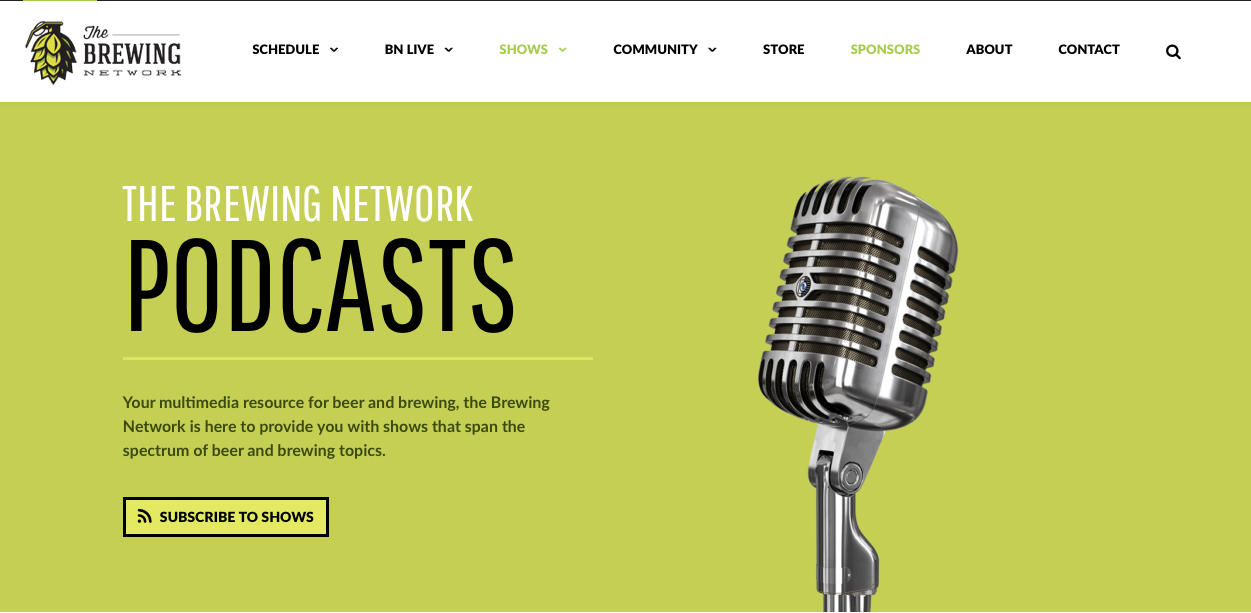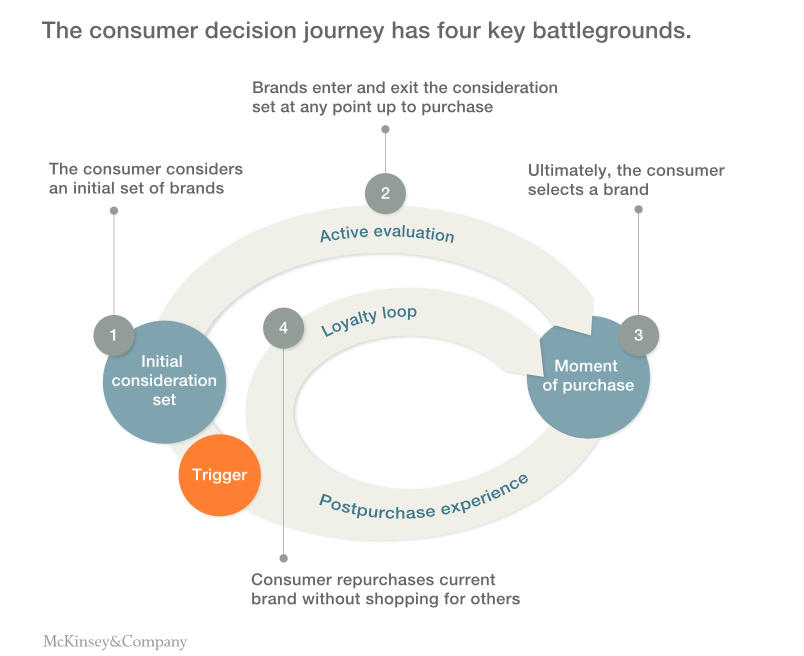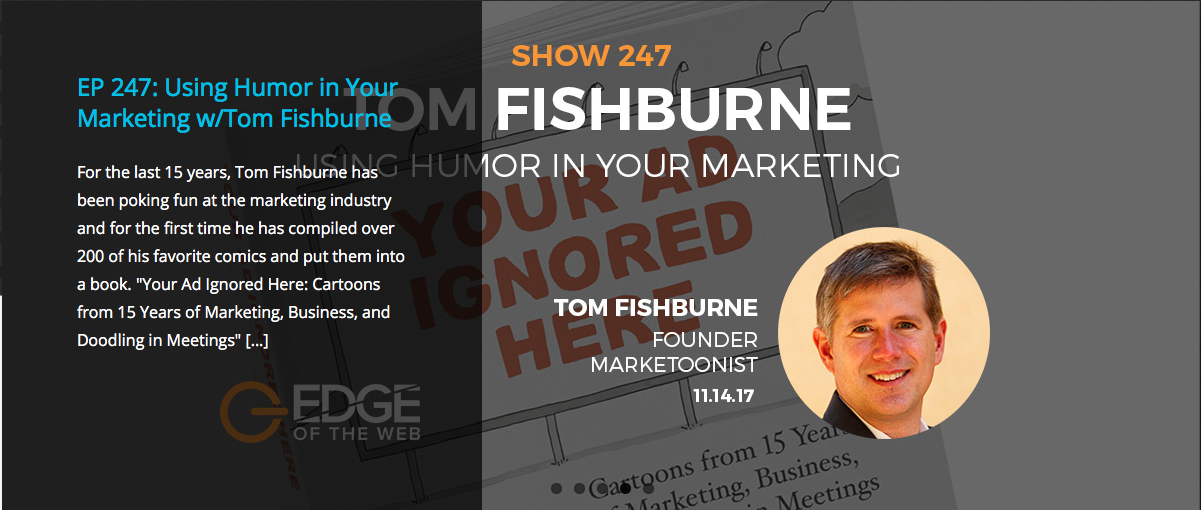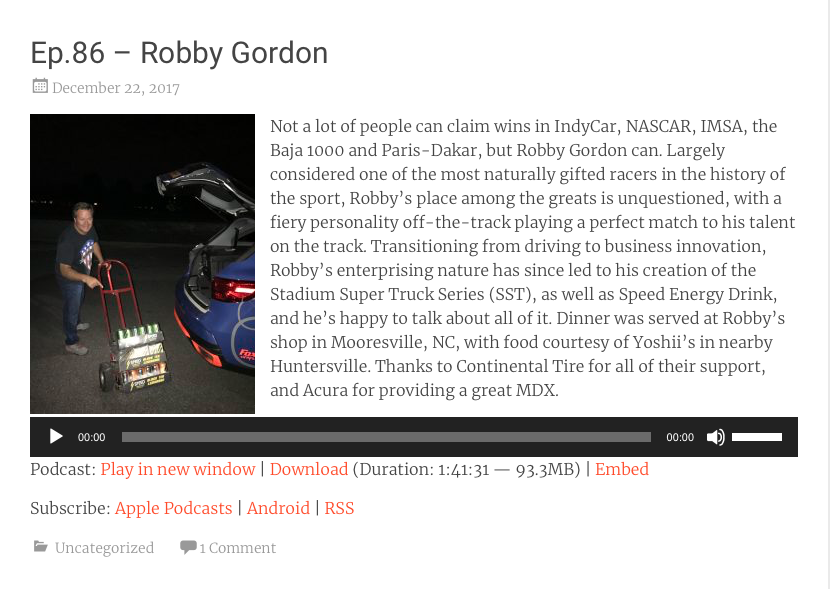
Editor’s note: Even if you read this title when CMI published it three years ago, you’ll find the updated information and new examples helpful to your content curation.
Content curation taps into the power of existing owned, social, and third-party media to enhance and extend your content marketing resources.
This doesn’t mean content curation is free.
Rather, curated content is more cost effective than brand-spanking-new content. Even better, content curation enables you to maximize the full potential of existing content across your organization.
To ensure that we’re on the same page, here’s my content curation definition:
To meet your audience’s information needs, content curation is the assembly, selection, categorization, commentary, and presentation of the most relevant quality information. You add your human editorial perspective while integrating your 360-degree brand.
While saving your audience valuable time, content curation isn’t a cheap substitute for original content creation. Rather, content curation yields measurable benefits aligned with your business goals. It:
- Fills your editorial calendar with quality content from a variety of voices
- Extends the life of existing content across your organization, including non-marketing information
- Supports ongoing content amplification and distribution
#Contentcuration isn't a cheap substitute for original content, says @HeidiCohen.
Click To Tweet
By contrast, content aggregation is the compilation of information, references, or links. While it looks like content curation, content aggregation lacks unique editorial input and commentary.
While most content marketing research no longer tracks the use of content curation as a separate category, Jebbit’s Jenna Keegan recommends marketers ideally strive to curate 25% of their content.
Marketers should strive to curate 25% of their #content, says @jennakeegs.
Click To Tweet
Based on my experience, marketers can use content curation at least once a month or as frequently as once a week. Here’s how a monthly content curation plan might look:

8 ways to curate content like a pro
To curate content that breaks through the information clutter to support business objectives, here are eight ways the pros use content curation to yield measurable results.
1. Spotlight the best of the week’s news
Curating the news provides a useful service for your audience. It highlights key events and changes your niche that they need to stay current. Christopher Penn does this with his weekly curated email newsletter, Almost Timely News.

In the Almost Weekly News, Christopher organizes curated links across a consistent set of categories. While focused on marketing, he includes other categories that add depth to the content such as:
- Good Reads, Long Reads, Interesting Stuff
- Fun, Games, and Entertainment
- Economics, Politics, and Society
Christopher includes an introduction with his commentary on the week’s events. This editorial distinguishes his content curation from aggregation.
Christopher Penn’s pro content curation process
Key to content curation success: Human judgment. (HINT: You should incorporate editorial decision-making too.) Vet the information you curate to ensure that it’s valuable to your audience.
Curate your content in small batches to simultaneously support your daily content and social media efforts.
Each day Christopher identifies the top content he finds interesting or useful by checking the top shared content on Twitter and LinkedIn. (His audience is B2B, so your focus may vary.)
Curate #content in small batches to support daily content & #socialmedia efforts. @HeidiCohen
Click To Tweet
Due to his skill set, Christopher’s curation process is more technical than most content creators’. He uses a suite of SEO and social media analytics tools as well as custom-built software to clean up his social shares and prepare the content for the newsletter.
Actionable content curation tips:
- Brand your curated content. He uses a consistent email header image. It’s an interesting combination of mousetraps revealing his sense of humor.
- Organize the information to help audience consumption. Make your content curation more than a link dump.
- Add value for your audience in the form of editorial commentary. Include your personal insights like Christopher does.
- Incorporate marketing promotion with care. Christopher announces his books, speaking engagements, and product offering in his newsletter. He’s earned this right by consistently offering quality content curation. The promotion is clearly defined as “advertising” so that the editorial line isn’t blurred.
HANDPICKED RELATED CONTENT:
2. Develop a cyclical curation column to fill your editorial calendar
Provide your audience with regular content servings to develop content anticipation. This is even more important in an era where appointment media has disappeared.
Spin Sucks’s Gini Dietrich’s pro content curation process
Create cyclical content your audience looks forward to consuming.
It’s relatively easy to create regardless of your content resources with an established content curation format.
For example, the Spin Sucks editorial calendar includes two weekly content curation columns: Gin and Topics for YouTube videos and The Big Question for Slack group discussions. Gini points out that these curation columns broaden the blog’s reach.

At the start of Gin and Topics, Gini used her personal Facebook and Twitter accounts to ask her community to send her videos they thought were funny. Initially it was time consuming, but after three months people started submitting videos on their own. She still includes a reminder at the end of every column to forward videos.
Gini has evolved to using the Spin Sucks Slack group’s Gin and Topics channel to collect video links. On average, she receives 10 to 15 videos per week from which to choose.
In true pay-it-forward social media style, Gini gives people credit for the videos they forward by linking to a piece of their content.

For The Big Question, Gini posts the week’s question in the Slack channels and on social networks. Additionally, she posts it in HARO (a regularly distributed email and website where content creators can seek sources for their articles that’s distributed to thousands of PR-type professionals), bringing in new readers and subscribers.
Use @helpareporter or @slackhq to seek sources for articles & build your community, says @gindietrich.
Click To Tweet
Actionable content curation tips:
- Develop a tailored cyclical curation content format for your audience. It facilitates content creation on a regular publishing schedule. While Gini’s Gin and Topics took time initially, it’s relatively low-maintenance to create on a weekly basis.
- Get your community involved in your content curation. Ask your social media communities to spotlight content they think is worthwhile. When the piece is published, they’ll share with their networks, which helps your distribution.
- Think beyond your curated content. Build your community by paying it forward with mentions and links. Also by tapping into other people’s communities such as HARO.
- Brand your curated content columns. Act like a media entity to create ongoing columns that are recognizable to your audience. Craft a consistent title and graphic like Gini did.
Get your community involved in your #contentcuration efforts, says @HeidiCohen.
Click To Tweet
3. Get your audience and staff involved
With a small editorial team also responsible for marketing materials, Contently uses content curation to maximize productivity, according to Editor-in-Chief Jordan Teicher.
Contently’s Jordan Teicher’s pro content curation process
Jordan incorporates content curation into Contently’s brainstorming meetings. For example, he asks his team to find existing studies about which they can say something new.
Spotlight your internal expertise. Jordan also taps into organizational expertise with the use of brief questionnaires. They ask employees to share their predictions and tips that the editorial team gathers and synthesizes into a listicle or infographic.
While curation is an important part of Contently’s offering, truly original content is the core of its strategy. According to Jordan, Contently aims for a ratio of 75% original content and 25% curated content. But, curated content is always viewed through some lens of originality.
Actionable content curation tips:
- Be original even if it’s curated content. If you regurgitate someone else’s work without adding your perspective, you won’t benefit from it. Even if an individual article does well, the audience won’t care that it came from you.
Be original even if it's curated #content. Add your perspective, says @JordanTeicher.
Click To Tweet
- Figure out how your analysis or opinion complements a report from another publisher. Similarly, if you’re collecting quotes from leaders in your industry, ask them questions they haven’t heard. Don’t reinvent the wheel, but reimagine the source material.
4. Incorporate your existing content into new content to keep it visible
“For my role with Content Marketing Institute, curation is viewed as a holistic process — it flows through all of the content produced by the editorial team, and is treated as part and parcel to CMI’s overarching content marketing strategy,” according to Jodi Harris.
Alignment with your #contentmarketing strategy is integral to successful #ContentCuration, says @Joderama.
Click To Tweet
Jodi doesn’t solely view curation in terms of individual content assets such as blog posts, newsletter content, or videos. Instead, she assesses how to amplify content that is already resonating, so that its value and usefulness can be extended to new audiences.
Content Marketing Institute’s Jodi Harris’s pro content curation process
Repackage multiple posts into “essentials” guides on the topic. “How to Deliver Emails That Will Increase Reach, Impact, and Subscriber Satisfaction” is a prime example.

Repurpose a key component of a popular post into a new format such as a checklist, an infographic, a data visualization chart, or social media posts.
To identify high value assets and efficiently turn them into curated content on an ongoing basis, Jodi shares a few tips that have served her well:
- Monitor initial performance of all content. This includes examining search traffic over time to determine the long-tail potential of high performing content. If a piece of content still drives good search traffic after six months of publication, it’s likely a topic of interest for the audience and, therefore, is worth focusing on for curation purposes.
- Track the most popular creative assets you publish across all of your platforms. For example, Jodi uses a spreadsheet to log the creative content marketing examples that contributors have shared in CMI’s blog posts, case studies, Chief Content Officer magazine, social media conversations, and other content channels. She updates the list weekly, so all the information she needs for future example-driven curation efforts can easily be found, accessed, and applied.
Actionable content curation tips:
- Mine highly shared and commented content, blog posts, presentations, and other social media activity for high quality examples. Track them in a single location.
- Cross-link to older content. After surfacing relevant high-performing content to spotlight in new content, include a link to the new content in the original post. This helps your search optimization and keeps your content fresh.

5. Pick the best of available content
Each morning BuzzSumo’s Steve Rayson reviews content written by the people he regularly follows using BuzzSumo’s outreach lists. He likes to be one of the first to share or comment on that content.
Make #contentcuration a daily habit, says @steverayson.
Click To Tweet
BuzzSumo’s Steve Rayson’s pro content curation process
Next, Steve searches BuzzSumo for recent content on his core topic of interest (content marketing) that’s receiving shares and links.
For example, when curating “interactive content” for an article, he saw many lists of so-called great examples. After checking performance results, he discovered the content may have looked great but didn’t resonate with audiences. Steve always checks his perceptions with the actual number of shares and links.

Support building authority and credibility. To that end, it’s important to BuzzSumo to find and share the latest news and findings about its core focus with its audience.
Curate strong content examples that help the audience and add original advice. For example, a curation of good how-to posts includes an analysis of what makes a good how-to post. (For a curated list of Steve’s content curation tips, check out this article.)
Actionable content curation tips:
- Add value. This is a key aspect of content curation that many marketers miss. Answer: “Why is this content important for my audience?” Ideally, add context, link to related information, and provide analysis and opinion.
- Make curation a daily habit. Support your audience with regular servings of curated content. This is similar to Christopher’s weekly approach.
- Seek, sense (aka filter), and share. As you find content, you validate it, put it into context for your audience, and assess how valuable it is. As a result, you only share what’s really valuable to your audience. Good curation saves your audience time to focus on the most important content.
Good curation saves your audience time to focus on the most important #content, says @HeidiCohen.
Click To Tweet
6. Curate other people’s research
Provide readers with a comprehensive understanding of a new or hot topic. Curate the latest research from credible sources based on the blog’s core categories.
Actionable Marketing Guide’s Heidi Cohen’s pro content curation process
I stay abreast of the latest marketing research by reading a few key email newsletters, namely eMarketer, Global Web Index and Marketing Charts, as well as sources like Nielsen, comScore, and Pew Internet.
Additionally, I monitor other major annual research efforts such as Mary Meeker’s annual data dump and Content Marketing Institute/MarketingProfs research.
Find new content ideas and topics based on this research, such as this one on audio content. Further, I include at least one data point and related chart in every piece of content I create to validate my assumptions.

My goal is to digest the relevant key research by credible sources to provide readers with an understanding and tactics they can use.

My research roundup posts follow this process:
- Select the key data points important to the audience. It’s essential to examine each piece of research for validity and other factors. Sometimes companies skew their research results based on whom they survey and the questions they ask.
- Include relevant data charts to attract attention and yield shares on social media platforms.
- Add personal analysis and commentary based on my marketing knowledge and experience. Many executives accept market research without checking its assumptions, respondents, and questions.
- Provide actionable marketing tips based on the research results. I go beyond selecting and explaining the data. I show readers how to use the information.
- Add influencer input. Depending on the research and topic, I reach out to colleagues to get their perspective.
Actionable content curation tips:
- Collect relevant research on a key topic for your readers. Become the go-to expert by sharing other people’s research.
- Provide context. Don’t leave the data without providing quality commentary for your audience.
- Augment curated content with useful visuals. This can include photographs, videos, and presentations. For research, this generally means data charts. The key benefit of this tip is to drive Pinterest activity.
Co-Schedule’s Nathan Ellering’s pro content curation process
The idea for Nathan’s post, The Best Times To Post On Social Media, came from asking the customer support team, “What questions do customers ask again and again?” This is a prime example of curating FAQ content where you answer your audience’s pressing questions by supplying the best answer.
Curate #content ideas from your customer support team says @njellering.
Click To Tweet
Beyond creating blog posts, it provides quality content for your sales and customer service teams and eliminates redundant work. Even better, Nathan’s article improved on existing content.
Research the keywords the audience and prospects would use to find this information. Using Moz, Nathan found a core keyword phrase (e.g., best times to post on social media) and several related keywords surrounding each of the major networks (e.g., best time to post on Facebook, best time to tweet).
Combining the post idea and related keyword phrases yielded the initial post outline. As a result, Nathan knew what content he needed to curate – research studies or data citing the best times to post on each major social network.
To determine the commonalities Nathan put the data into a spreadsheet. This enabled him to transform keywords in the outline into bullet points for each social media network.
CoSchedule initially published the post with an analysis of 10 studies. After examining its success and feedback, Nathan did more research to answer time-zone questions. This resulted in an expanded and republished post.

Nathan continues to curate new research as it becomes available to enhance the blog post, keeping it up-to-date and relevant.
After the success of the Best Times to Post On Social Media article, Nathan used the same structure to plan new content, including The Best Times to Send Email. It too was a success.
Based on the new content’s success, CoSchedule instilled content curation as a performance standard in all new blog content:
Actionable content curation tips:
- Curate content ideas from your customers, prospects, and followers. Ask your sales and customer service teams for key questions they get asked again and again. Also use social media to gather these questions.
- Connect content ideas to keywords your prospects use to find information. Build search optimization into every piece of content before you write.
- Back up every claim in your content with fact-based curated research. Support your content assertions with data.
- Examine blog post comments, social media messages, and support tickets for new ideas to enhance your existing content. Don’t be complacent. Extend your content offering to update or add new content to answer new questions.
- Optimize content long after it publishes to keep it relevant. Ensure that your content answers new questions and contains the latest data.
Optimize #content long after it publishes to keep it relevant, says @njellering.
Click To Tweet
7. Get influencers involved to create crowd-pleaser content
Curated influencer content is popular since it taps into influencers’ name recognition and reach, which should drive traffic to your content.
Many content creators underestimate the amount of work involved in the research and outreach stages of this type of content.
AudienceBloom’s Jayson DeMers’s pro content curation process
The best way to curate content is to find the right influencers from whom to draw.
You need three filters to find people who fit your criteria. They should:
- Have a strong reputation
- Know what they’re talking about on the topic
- Be willing to contribute
Find the top-shared content within a given topic. Jayson usually starts with a tool like BuzzSumo. Then he traces the content to its originators or to the people most responsible for promoting it.
Use a tool like @BuzzSumo to find top-shared #content within a given topic, says @jaysondemers.
Click To Tweet
Judge the originality, effectiveness, and knowledge of the people behind the work. This editorial selection whittles the list to only well-known experts in the field
Check each influencer’s social profiles and see how often those people respond to incoming comments, questions, and requests. If they are active, they’ll probably be willing to respond to the request, if not contribute fully to the content.
Actionable content curation tip:
- Do your homework to surface the best contributors. It’s a lengthy process, but worth it. It leaves you with the strongest candidates in terms of willingness to provide content and the strength of that content.
Aaron Orendorff’s pro content curation process
To get influencers contributing to epic content isn’t easy. But the two ingredients most people leave out – which can sideline even the best outreach plans – are simplicity and singularity, Aaron says.
Make influencer outreach easy and clear. Aaron keeps a singular communication focus – one person, one email, one exchange, one ask – one move at a time, as he did with Growth Hacking: Strategies and Techniques from Marketing’s 25 Most Influential Leaders.
Create a Google Form composed of two questions that resonate with the influencer along with word-count requests to gather influencer contributions.
Secure initial contributions from people with whom you have strong relationships. Use email or direct messages. For example, here’s Aaron’s Facebook exchange with Eric Sui, the CEO of Single Grain.

Close each exchange with a request for an introduction to another influencer. Aaron asks, “Can you introduce me to (blank)? They’d be perfect for this too.”
Here’s the key to Aaron’s masterful content curation: As he trades “up the chain” – moving from people he knows to people he doesn’t know – he keeps his communication simple and straightforward, adding social proof along the way.
Use social media, specifically Facebook and LinkedIn, to get additional respondents as a last attempt. This step increased the number of contributors to his article to 25.

Use #Facebook & #LinkedIn when reaching out to influencers to contribute #content, says @iconicontent
Click To Tweet
Actionable content curation tip:
- Use the same simple curation principle to encourage influencer amplification when the post goes live. Send each contributor a short email with a simple request. Here’s a copy of Aaron’s email. Yes, it technically contains three asks.

8. Create the ultimate list
Ultimate-list-type content serves two key content marketing needs. It:
- Provides foundational or cornerstone content on the topics at the center of your content hubs and silos
- Attracts a broader audience based on its depth of content to support your traffic objectives
HubSpot’s Lindsay Kolowich and Corey Wainwright’s pro content curation process
HubSpot’s content team members have mastered the curated ultimate list; they call it How to Crowdsource a Blog Post Using Google Docs. As Corey explains, “It’s an efficient way to curate the contents of a list post, drawing on the knowledge of many to fill in the knowledge gaps of the one.”
Determine post focus. Select a topic that lends itself to input from different perspectives and experiences.
Set up a Google Doc to capture input. Corey advises using the KISS (Keep It Simple Stupid) principle to attract a broader array of contributions. Give participants leeway to tailor their responses. Requests asking for more details appear to require more work and can scare away potential contributors.
Use @Googledocs to capture input from potential contributors. #CoreyWainwright via @HubSpot #contentcuration
Click To Tweet
Invite people to participate. Create a list of people from whom you’d like to gather information. Draft an introductory email to explain what’s involved and why you chose them. Give contributors a reason to participate. She uses the blue “share” button in the top-right corner of the Google Doc.

Set an example for contributors. Input a few examples of what you’re seeking to help participants.
Curate the best ideas. After collecting the input, use your headings to create your list and craft the post. In the process eliminate duplicate and/or weak contributions.
Curating different perspectives using this approach is especially helpful for global examples when the author either isn’t familiar with brands in other regions or doesn’t speak the language, Lindsay says.
She used this approach for The 17 Best College Instagram Accounts (And Why They’re So Darn Good) to gather input from colleagues from other regions of the world.
They sent their ideas with translated captions. As a result, Lindsay was able to include examples from Chile, United Kingdom, Lebanon, and other countries.
Content curation bottom line
Done well, content curation positions you as the go-to tastemaker in your niche.
Content curation fills your editorial calendar with high-quality content, extends the life of your existing content, strengthens your social media participation, supports long-term distribution through search, and supplements your content with your commentary and contextual positioning of other people’s content.
You become known for surfacing quality content across owned, social, and third-party media through the use of more streamlined processes and tools like these pros.
What’s holding you back from filling out your editorial calendar and distribution plan with curated content?
Curate the best ideas in content marketing over a few days this September in Cleveland, Ohio. Register today for Content Marketing World for lowest rates.
Cover image by Joseph Kalinowski/Content Marketing Institute
Please note: All tools included in our blog posts are suggested by authors, not the CMI editorial team. No one post can provide all relevant tools in the space. Feel free to include additional tools in the comments (from your company or ones that you have used).
The post How to Curate Content Like A Pro: 8 Lessons [Examples] appeared first on Content Marketing Institute.




























